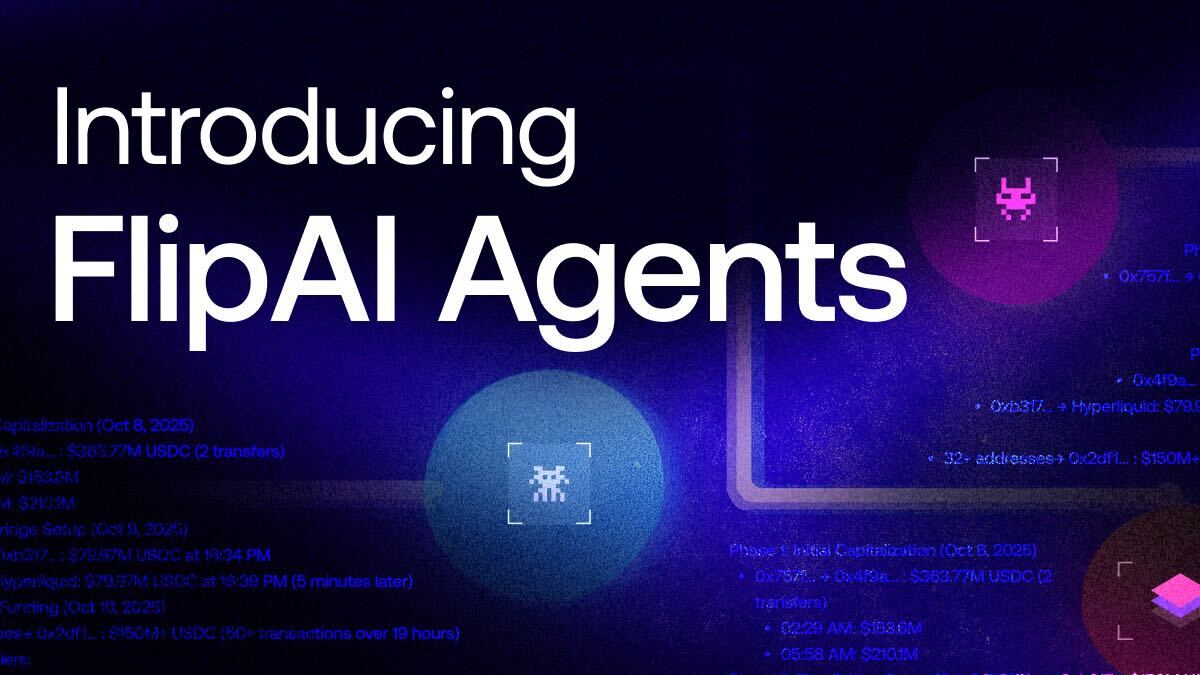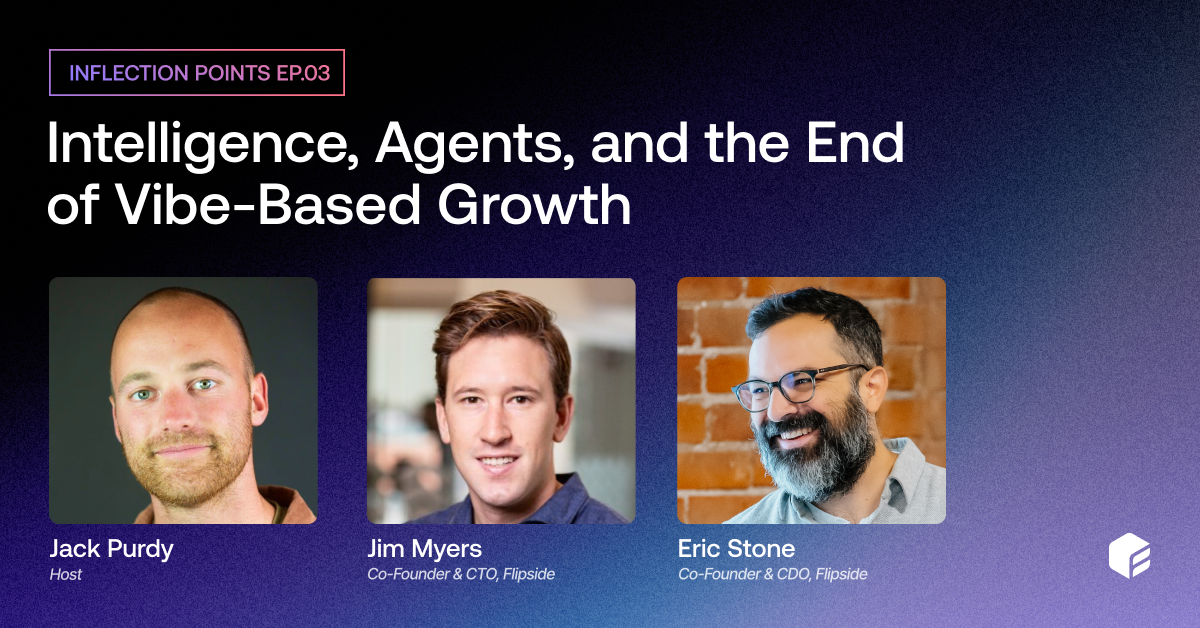How to use blockchain explorers

As momentum builds for the next major bull run, the importance of personally analyzing on-chain market data to make well-informed choices cannot be overstated. Under these conditions, blockchain block explorers are an invaluable asset.
At their core, blockchain explorers are essentially search engines for on-chain ecosystems and cryptocurrencies. These crypto tools offer real-time access to crucial data points, including transaction histories, wallet activities, and network fees, providing crypto users with a transparent view of specific market's movements.
In this guide, we'll delve into how to use blockchain explorers, what kind of insights they can reveal, and how they differ from on-chain analytics platforms like Flipside.
Why Use a Blockchain Explorer?
Blockchain explorers provide a convenient, real-time window into the blockchain universe, providing essential information about transactions, blocks, and the overall health of a blockchain network.
More specifically, blockchain explorers can be used to view the following:
- Transaction Histories: Track the history of a specific address, including all inbound and outbound transactions.
- Confirmation Statuses: View the number of confirmations a transaction has received.
- Current Balances: Check the real-time balance of any cryptocurrency address.
- Unconfirmed Transactions: Monitor transactions that haven't yet been confirmed by the network.
- Double-Spend Incidents: Detect any double-spending attempts within the network.
- Orphaned Blocks: Identify blocks that have not been added to the main chain.
- Miner/Validator Information: Identify which miner or validator processed a specific block.
- Detailed Block Parameters: Access detailed information on a network’s real-time and historical block parameters, including fees, hash rate, and difficulty.
This makes them useful for new and seasoned crypto users alike. If you’re just starting off in crypto, blockchain explorers provide a convenient way to track your transactions and gain a deeper understanding of general blockchain functionalities. And if you’re a serious crypto user, these platforms can provide critical insights into the health of specific blockchain projects and help you identify potential market trends, overlooked token distributions, and notable wallet addresses.
How to Use a Blockchain Explorer
There are dozens of blockchain explorers to choose from, including multiple options for many major blockchain networks. Fortunately, most of these platforms are very similar, meaning once you know how to use one the others should be fairly straightforward.
How you use a blockchain explorer comes down to what you are trying to learn. Here are some of the most common ways to use a blockchain explorer:
- Checking Wallet Balances and Activity: Enter an address in the search bar to see its balance and recent activities. This is helpful for monitoring your holdings or investigating others' wallets.
- Looking Up Transaction Details: Paste the transaction hash in the search bar to get detailed information, including the amount, fees, and associated addresses.
- Inspecting an Existing Block: Search for a block number or hash to view its contents, including the transactions it contains and other relevant data.
- Checking Gas Prices: Look up the current average or median gas price, which can be critical for executing timely and cost-effective transactions.
- Identifying Network Validators: Access the current validator set on PoS chains to understand the network's consensus mechanism better.
,
In addition to the above, many blockchain explorers allow users to export transaction data, which can be helpful for record-keeping or tax purposes. Some explorers also feature ready-made charts that help visualize blockchain trends or feature a running leaderboard of trending blockchain projects that have seen a recent surge in popularity.
,
,
Leveraging Additional Crypto Tools
While blockchain explorers provide a granular view of individual transactions and addresses, they can be difficult to navigate given the encoded nature of their data. More often than not, users have to pore through endless rows of transaction IDs, alphanumeric user addresses, and other raw data to fully understand what is happening on-chain. Most blockchain explorers only feature a limited array of data visualizations, or none at all, and do not offer custom dashboards or data queries.
Fortunately, on-chain analytics platforms like Flipside offer deeper market insights and more advanced analytical capabilities – all presented in the form of human-readable data that's labeled and tagged in a way that's easy to understand at a glance. By analyzing extensive datasets across multiple blockchains, these crypto tools provide both a macro view of market trends and user behaviors as well as an opportunity to zoom in on whatever blockchain project, crypto holder demographic, or multi-protocol ecosystem you are interested in.
Using a free on-chain analytics tool like Flipside, you can enjoy:
- Custom Reports and Queries: Create tailored reports and perform complex queries to gain specific insights, instead of relying on the same pre-configured dashboards and statistics that other users are basing their decisions on.
- Visual Data Representation: These crypto tools often present data in a more user-friendly manner, using charts and graphs that make complex information more accessible. This not only makes the data easier to digest – it increases the likelihood that you pick up on previously overlooked opportunities and trends.
- Comparative Analysis: On-chain analytics platforms make it easy to compare various tokens and protocols across multiple parameters, offering a comprehensive view of the market. While there is a growing number of multi-chain block explorers that track multiple different blockchains on one platform, these tools are usually not as powerful or flexible as a full-fledged on-chain analytics platform.
In short, on-chain analytics platforms often do a better job at aggregating and analyzing blockchain data, offering deeper insights into market trends, user behavior, and overall network health. This powerful, customizable access to real-time market intelligence makes it easier to make well-informed decisions and stay ahead in the face of dynamic market conditions.
Dive Into the Data For Free
Blockchain block explorers and on-chain analytics platforms are vital tools for anyone interested in what is actually happening in the world of crypto. And as you prepare for the next bull run, these crypto tools may end up being crucial to your success.
Blockchain explorers are typically free to use, so there’s no reason not to add them to your DYOR arsenal. And while most on-chain analytics tools require a paid subscription, Flipside lets you dive into data from 25+ different blockchains and protocols, create your own custom queries, and browse thousands of community-made dashboards for free.
Whether you're a seasoned trader or new to the crypto world, we encourage you to take advantage of these free tools, base your decisions on verifiable data, and confidently navigate the exciting, unpredictable world of crypto.







